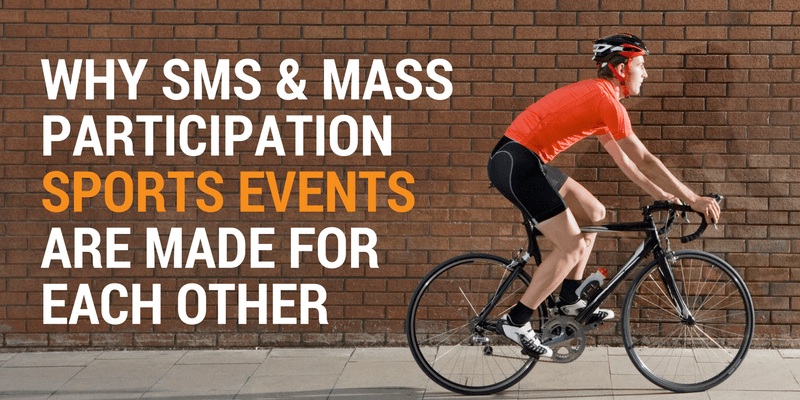The New York Times, Olympics, And SMS Messaging

The Olympics are in full swing as I write this. And thanks to the New York Times’ innovative use of SMS messaging, I have an insider’s view few get to see.
Here’s how it works. The Times reporter Sam Manchester is in Rio covering the games. He’s also given the task of sending SMS updates to anyone who opts into a special list using the Times’ shortcode and a keyword. Once signed up, people will get 3-4 updates per day. The updates include emoji, images, video, and a personal touch.
Getting Personal
An article on Niemanlab.org says the Times is hoping Sam’s messages will reach tens of thousands of readers. Product director Andrew Phelps explains the motivation for the first of its kind program, “If you think about the other text conversations that show up on your lock screen — it’s your mom, it’s your significant other, it’s your friend. I think that if we can be there its a really powerful relationship that we can create”.
It is a novel idea – trying to be personal with thousands of people. Especially because they are expecting – even asking – for people to reply and ask questions directly to Sam. It’s much easier to build a relationship if there is two-way communication. So if this works, they may be on to something.
Is It Working?
When I saw that the Times’ was offering this service, I immediately went to sign up. Since the process uses a US shortcode, you need a US mobile number to sign up. Fortunately, I have one for travelling so it was quick, easy, and free. Here’s what I received immediately after signing up.
This autoresponder message certainly feels personal. It’s informal, uses an emoji and exclamation points. Even the legally required opt out statement is more casual than is it might otherwise be.
The next message, with the Times’ logo, is their contact information. If you click on it, you’re presented with all the details (in this case the shortcode and the name NYTimes), and the option to add them to your contacts.
I eventually added them to my contacts, and now all the messages I get show up from “NYTimes” rather than the shortcode. This is something I haven’t seen other marketers do, but it’s genius. It guarantees immediate recognition for every message they send. But to make it personal, I think maybe it should have used “Sam” or “Sam@NYT” as the name to reinforce how personal they wanted these messages to feel.
But overall, I’d say their desire to make me feel I’m getting personal messages is working well in these first few messages. But did it last?
Types Of Messages
I’m getting all kinds of information from Sam. He’s sending interesting facts, images, and even important information that hasn’t made it out to the regular news media yet. Here are some samples:

Who knew that an event designed to highlight the capabilities of healthy athlete bodies would primarily offer McDonalds food? I wonder why most of the food court is empty, and I hope alternatives eventually showed up. I can’t imagine trying to run or swim with a belly full of fries and burgers.
I hadn’t noticed the absence of the flowers until I saw this text. I couldn’t tell what that little thing was supposed to be so I looked it up. It’s a 3D rendering of the Rio Olympic logo made of some sort of plastic (according to an article in the New York Times).
I have to wonder how many replies he received to this invitation. I sent a message with a question but haven’t received the answer yet. But then I might be the only one who didn’t know about the Rio mascot that Usain Bolt carried after making history. It feels good though, that they are asking for people to engage.
I may not have gotten an answer, but apparently enough people asked about the jackets that Sam decided to find out the answer. He also shared details on badminton shuttlecocks (only left wing feathers are used!) and what some of the gymnastic terminology actually means.
If you watched the men’s 100-meter run, you saw Usain Bolt’s long legs carry him to gold at the last second. But the video Sam sent in this message illustrates it was still a very close race with just .25 seconds between first and eighth place.
Everyone was talking about the pool colour being green, not blue. Sam sent this message solving the mystery for us before it made it out to news networks. Then he broke the news of the robbing of the American swim team, again before I saw it in the news.
The overall effect of these and all the other messages I got from Sam left me feeling like I was getting messages from a friend who is there. Even the breaking news stories gave me the sense of having special access and privileges to the event rather than just getting news updates.
I’d have to say they did manage to meet their goal of building a personal relationship through these messages. I have no idea who Sam actually is, what he looks like, or if he’d be someone I’d like to drink a few pints with at the pub. But I like him and his messages. They even improved my opinion of the NYT company too because they tried this experiment with SMS.
Going Farther
After about three days of being on the list, I received the following survey request:
Of course I had to let them know what I think. I’d surprised myself how much I liked the alerts I was getting. It would have been nice though, to have a little more interaction. They asked for questions, and obviously answered some, but not all of them. So I shared these thoughts with them in the mobile survey.
NYT want to figure out how to make SMS a bridge to their millions of readers, yet also have it be personal. Asking the people who’ve been getting these messages their opinion, is probably the best way to figure out how to do that.
Who Else Is Doing It
I spent some time searching to see if any other news organisation was attempting to do this same thing with the Olympics. I couldn’t find anyone in the UK who was. But back in 2012, when the Olympics were in London, the BBC did offer an SMS service.
When you opted into the service, they would send you alerts 15 to 30 minutes before the start of an event. It was one-way messaging only, but a valuable service if you wanted to catch particular sports. It doesn’t appear they offer the same service this time, which leads me to believe they may have intended it to be for people who wanted to attend the event rather than just watch it.
We’ll have to wait and see if the New York Times effort turns into anything more than an experiment. But it’s exciting to think where it could go and how other organisations could use it too.
Related Articles
SMS Marketing: Four Sectors Successfully Using Text Messaging
SMS marketing has seen a huge uplift in popularity in recent years, with big brands investing in the technology to better engage with their customers. There are so many benefits of SMS marketing, from the ability to directly to reach customers with your communications, to the fact that over 80% of SMS texts are read. With over approximately 90% of the world receiving mobile coverage, you’re highly likely to be able to reach your audience, regardless of where they are. SMS marketing is cost effective, and campaigns are quick to develop, in as short a time period as the time it takes to write a text message. This gives you the advantage of being able to communicate quickly, and effectively with customers, reacting to information almost instantaneously. With so many reasons to use SMS marketing, we’ve highlighted four sectors successfully using SMS messaging as case studies to highlight the advantages of investing in the technology.
SMS Marketing for Sports Teams
An effective use of SMS campaigns is for support of sports teams and leagues. Using automated messages to communicate with supporters ensures that your teams have the chance to play to full stadiums throughout each and every game. This, in turn, motivates them, providing support.
Why SMS and Mass Participation Sports Events are Made for Each Other
Most major sports teams in the UK and US already know the power of SMS for engaging fans via scores, stats and other data. But the power of SMS can extend far beyond the world of the major leagues. SMS is ideal, not only for communicating with participants but to coordinate teams of volunteers across the event.
An SMS alert message could have helped Farah and other athletes
5 SMS Marketing Lessons from the Six Nations Championship
How SMS Marketing can Reactivate the Value of Former Gym Members
We look at how SMS Marketing can help gyms, saunas, solariums or other any other kind of membership based businesses in the health and fitness sector generate substantial ROI by unlocking the value of lapsed memberships. With a simple strategy, you can bring former members back on board and turn them back into loyal customers.
SMS Marketing for Instructors and Personal Trainers
A lot of the time, personal training can be one of the most rewarding jobs you could possibly pursue. Yet at other times, it can be dispiriting. Naturally, this is all part and parcel of the industry, but that doesn’t mean there aren’t changes you can make to your everyday work habits that will boost the benefits and mitigate the downsides. And top of the list of those changes are SMS marketing strategies.
SMS Marketing for Community & Amateur Sports Clubs
How to Use SMS and The Olympics to Boost Business
Almost any business, or even a not-for-profit company, can take advantage of the frenzy of sporting events, like The Olympics. Especially when you combine it with mobile marketing. That’s because there are plenty of fans, and their devices, here in the UK.












